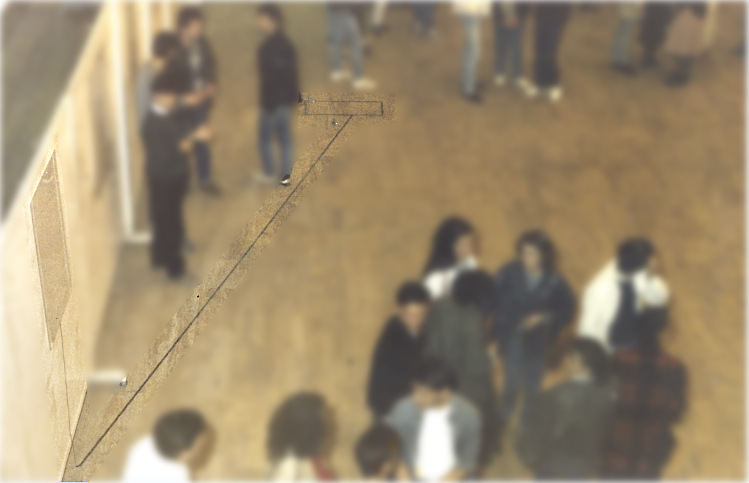Square, Installation, 1985, mix technique, 70×100 cm, FILOART
The observer only needs eyes to see (the work) The Square. While viewing this work, the observer sees first the contours of a black isosceles trapezoid.
But to see “The Square”, the observer must first step inside a rectangle which is marked on the floor at a certain distance away from the work. Then the observer has to reach the right height and the right point. Only after taking these steps, the observer can see The Square.
What happened in this moment? Our brain mixed two things: memory and reality.
Memory is what our brain recorded as a picture of a square. Reality is the real view of the isosceles trapezoid in perspec- tive.
As a result of this we get a very disturbing, strange and unex- pected result.
Thus, the information our brain receives becomes a true — lie. Through breaking, manipulating and bending the rules of perspective, we can reach to see something that is (not) in front or beside us. The Square.
This work can be observed from this point of view, but also realized only by the human being. Therefore this work brings us to the question: what happens when the human perspective becomes the only view / observation point?*
What is a perspective and what do perspectives tell about us, as humans?
Through discovering and using the geometric rules of perspec- tives, not only did the aesthetics of drawing, painting and ar- chitecture change, but the discourse of the whole human kind. “Drawing” from their own perspective, humans took the central role over the environment (anthropocentrism).
Observing this work raises the following questions:
What is observing? Is it always what we observe, the same as what we see?
Can the building of one point of view destroy the perspective?
Exhibition View, 1986
_____________
*The point can be seen as a geometrical element, as a point of view, as an observation point or as a dogma.

